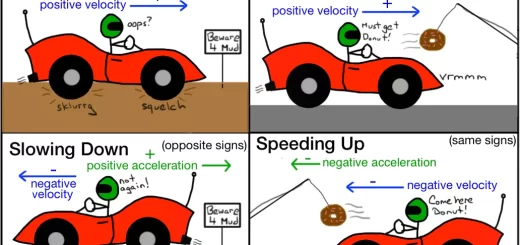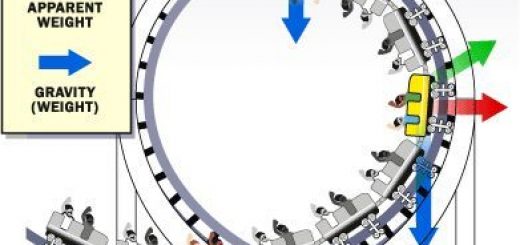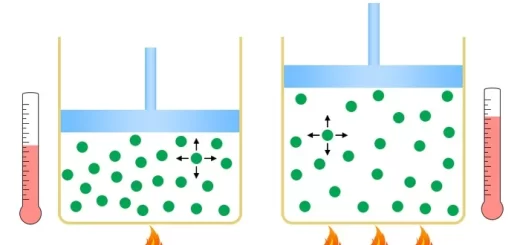Conditions of interference, Properties of light interference and light diffraction
Light waves propagate in straight lines in the homogeneous medium, They reflect when they fall on a reflecting surface, They refract when they travel between two transparent media different in the optical density, according to the laws of refraction.
Light waves properties
The light waves interfere when they have the same frequency, amplitude, and phase producing regions of constructive interference and regions of destructive interference, They diffract in the same medium when they pass through a slit or by a sharp edge having dimensions near to the wavelength of the light waves.
Light interference
You can get a source of monochromatic light to explain the light interference phenomenon, So, the wavelength has one constant value, Screen with a rectangular slit (S) at an appropriate distance from the light source, Screen with two narrow slits (S1 and S2 )and screen to receive the waves.
On operating the light source, the light waves pass from the slit (S) in the form of cylindrical waves, The double slits screen at the wave front, So, the produced waves from the double slits have the same phase (coherent), The double slits screen acts as a source of two coherent waves.
The two waves propagate and when they reach the last screen they give:
Bright regions (bright fringes) when a crest from (S1) meets crests from (S2) or a trough from (S1) meets a trough from (S2), where the path difference between the two interfered waves is 0, λ, 2λ, ……..or mλ, This is called constructive interference.
Dark regions (dark fringes) when a crest from (S1) meets a trough from ( S2 ) or a trough from (S1) meets a crest from (S2), where the path difference between the two interfered waves is ½ λ, 3 ⁄2λ, 5 ⁄2λ, …….. or (m + ½) λ, This is called destructive interference.
The wavefront is the surface on which all its points have the same phase and this surface is perpendicular to the direction of wave propagation, The coherent light sources are the sources that produce waves of the same frequency, amplitude, and the same phase.
The distance between two successive fringes of the same kind (bright or dark) can be determined from the relation: Δy = λ R/d, where (λ) is the wavelength of the used light, (R) is the distance between the double slits screen and the observation screen and (d) is the distance between the two slits.
Conditions of interference
- Each of the two light sources must be monochromatic.
- The two light sources must be coherent and have the same frequency, amplitude, and phase.
The interference has two types which are constructive interference and destructive interference.
Constructive interference is interference that produces reinforcement in the intensity of the light in some regions (bright fringes) as a result of meaning a crest of one wave with a crest of another wave or a trough of one wave with a trough of another wave.
Condition: The path difference of the two interfered waves equals (mλ), where (m = 0, 1, 2, …….or any integer).
Destructive interference is interference that produces weakness in the intensity of the light in some regions (dark fringes) as a result of meeting a crest of one wave with a trough of another wave.
Condition: The path difference of the two interfered waves equals (m + ½) λ, where (m = 0, 1, 2, ….. or any integer).
Light interference is a phenomenon of superposition of light waves produced from two coherent sources and produces reinforcement of light in some regions (bright fringes) and weakness in other regions (dark fringes), Interference fringes are a sequence of bright and dark straight parallel regions.
Factors affect the distance between two successive fringes of the same kind
- The wavelength of the used light (λ) (directly proportional).
- The distance between the observation screen and the double slits screen (R) (directly proportional).
- The distance between the two slits (d) (Inversely proportional).
Light diffraction
When monochromatic light waves fall on a circular aperture on a screen, They change their direction of propagation (diffract), They combine with (superpose) each other behind the aperture, Rings of bright and dark fringes appear on the observation screen, and the central bright spot is called airy’s disk.
Light diffraction is a phenomenon of changing the direction of light waves when they pass through a small aperture leading to the superposition of light waves and the formation of bright and dark fringes.
Airy’s disk is a bright circular spot formed on the observation screen when monochromatic light waves diffract through a circular aperture.
Conditions of appropriate light diffraction:
The wavelength of the light wave is comparable to the dimensions of the aperture and vice versa, From our study of the interference and diffraction phenomena, there is no big difference between them but each of them is a wave phenomenon that originates from the superposition of the waves.
Types and Laws of light reflection, Regular and Irregular reflection of light
Applications on the total reflection of light (Optical fibers, Reflecting prism, and Mirage)
Light wave properties, Analysis of white light, Spectrum colours, and Light intensity
Light refraction effects, Law of light refraction, Mirage, and Apparent positions of objects




